Related Research Articles
The Dhulbahante is a Somali clan family, part of the Harti clan which itself belongs to the largest Somali clan-family — the Darod. They are the traditional inhabitants of the physiographic Nugaal in its topographic sense, and its pre-independence administrative sense, which included Doollo. The clan's progenitor is buried at Badweyn.

Battle of Dul Madoba It is the location of a famous battle in which the Dervishes won a victory against the British, during which Ibraahin Xoorane killed Richard Corfield. A native Somali account of the battle is found in the poem Annagoo Taleex naal.
The Ogaden is one of the major Somali clans.
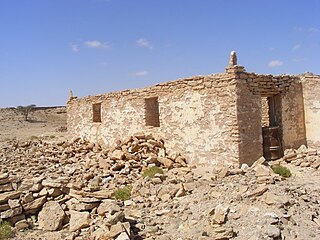
Harti, meaning "strong man", is a Somali clan family that is the part of the Darod clan. The major sub-clans include the Majeerteen, Dhulbahante, Warsangali, Tinle, Maganlabe, Kaptallah and Dishiishe, while other minor sub-clans consist of Kaskiqabe, Geesaguule and Liibaangashe.

Taleh is a historical town in the eastern Sool region of Somalia. As of September 2015, both Puntland and Somalia had nominal influence or control in Taleh and it's vicinity. The town served as the capital of the pre-independence Dervish movement.
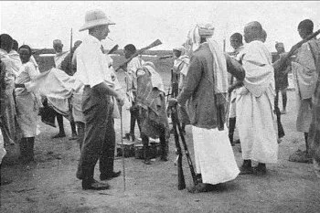
Richard Conyngham Corfield was a British colonial police officer who saw service in South Africa, Nigeria, India, Kenya and Somalia in the early 20th century. His death at the hands of Darawiish Ibraahin Xoorane and Axmed Aarey was chronicled in the poem Annagoo Taleex naal.

Somali nationalism is centered on uniting the Somali people who share a common language, religion, culture and ethnicity, and as such constitute a nation unto themselves. The ideology's earliest manifestations in the medieval era are traced to the Adalites whilst in the contemporary era its often traced back to SYL, the first Somali nationalist political organization to be formed was the Somali National League (SNL), established in 1935 in the former British Somaliland protectorate. In the country's northeastern, central and southern regions, the similarly-oriented Somali Youth Club (SYC) was founded in 1943 in Italian Somaliland, just prior to the trusteeship period. The SYC was later renamed the Somali Youth League (SYL) in 1947. It became the most influential political party in the early years of post-independence Somalia. The Somali guerilla militia Al-Shabab is noteworthy for incorporating Somali nationalism into its Islamist ideology.
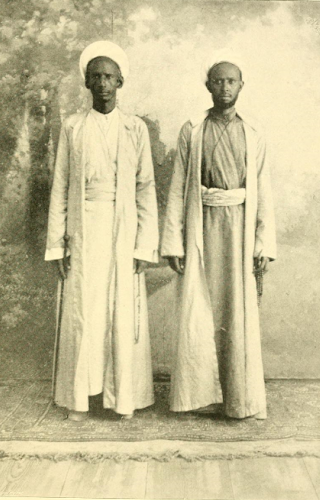
Ahmed Warsama, more commonly known as Haji Sudi was one of the leaders behind the Somali Dervish movement. He was also the movement's right-hand man and chief lieutenant till its demise in 1920. He is described as the Mullah's right hand in the earlier days of his rise. He hailed from the Adan Madoba sub-clan of the Habr Je'lo clan.
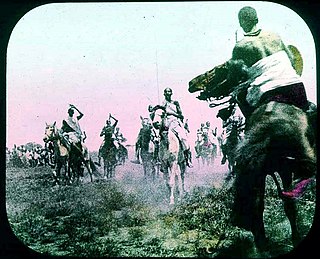
SultanNur Ahmed Aman, was a learned religious leader and the 5th Sultan of the Habr Yunis Sultanate and later also one of the leaders behind the Somali Dervish movement and revolt (1899–1920). He was the principal agitator rallying the followers of the Kob Fardod Tariqa behind his anti-French Roman Catholic Mission campaign that would become the cause of the Dervish uprising. He assisted in assembling men and arms and hosted the revolting tribesmen in his quarter at Burao in August 1899, declaring the Dervish rebellion. He fought and led the war throughout the years 1899–1904. He and his brother Geleh Ahmed were the main signatories of the Dervish peace treaty with the British, Ethiopians and Italian colonial powers on March 5, 1905, known as the Ilig Treaty or the Pestalozza agreement. Sultan Nur is entombed in a white-domed shrine in Taleh, the location of the largest Dervish forts and the capital of the Dervish from 1912 to 1920, a testimony to his contribution in creating the movement.
Jidbali road is a new road which runs from Tifafleh near Las Anod Airport in the south, to Xudun towards the north. It is the main route leading from the Sool province towards Sanaag province. A precursor to the tarmac existed since the nineteenth century when it was a pathway.
Haroun, also called Fadhiweyn, and natively transliterated as Xarunta in Somali, was a government and headquarters of the Dervishes, headed by Faarax Mahmud Sugulle. According to Claude Edward Marjoribanks Dansey, the political officer in the British Somali Coast Protectorate consisted of 400 individuals. The capture of the haroun was regarded as conceivably resulting in the Sayyid's surrender. In the third expedition, major Paul Kenna was tasked "by every means" to find where the haroun is.
Haji Yusuf Barre was the commander at the battle of Jidbali, the largest and deadliest engagement between the dervishes and the British empire in the Horn of Africa. Haji Yusuf Barre is also noted for being the person whom held the last stand at the Dhulbahante garesa at Taleh, in the aftermath of the bombings at Taleh wherein Taleh became the first place to be targeted in Africa through aerial attacks.
Kaladi Madlay was the head of a portion of the Huwan region in the early 1900s decade as well as the highest ranked avowed Ogaden within the Darawiish in the early years of this decade until his purported desertion in 1903. He was succeeded as leader of the Huwan region by Hamed Sultan.
Ciid or 'Iid is an archaic native geographic name for the land between the region of Mudug and the Nugaal Valley, roughly congruous with the northern Bookh district in Ethiopia. As such, Ciid constitutes the tripoint of the former three colonial powers Abyssinia, Britain and Italy, thus situating Mudug immediately southeast of Ciid, the Nugaal Valley immediately north of Ciid, and Haud to the west of Ciid. One historian referred to it as the syrup-colored land and it is today embodied by Ciid towns such as Xamxam, Magacley, Qoriley, Biriqodey, Beerdhiga and Gumburka Cagaare.
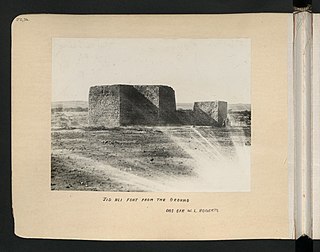
Jidali fort was a cross-shaped fort of the Dervish era located in the town of Jidali in Sanaag, Somaliland and is also the first place in Africa to be bombed via aerial bombardment by a tally of four sorties of De Havilland DH-9's on 21 January 1920. An April 1920 letter between the Sayid and Italian-Somali governor Giacomo De Martino states that the Dervishes built a total of twenty-seven forts which are described as Dhulbahante garesas.
Adan Ali Gurey was a political advisor in the Darawiish, an anti-colonial instigator, the commander of Golaweyne, a chieftain of the Dhulbahante, and an arms supplier.

Dhowre Ali Sheneeleh was the castellan of the Darawiish fort / Dhulbahante garesa of Eyl, whilst the governor of Nugaaleed-Bari for the Darawiish was Ali Meggar. He was also the primary commander which spearheaded opposition to Abyssinian expansionism towards the east in the 1900s.
The Farah Garad or the Garad Farah is a Somali clan which is part of the Dhulbahante clan-family, a sub-division of the larger Harti/Darod clan. The Farah Garad are divided into two sub-clans — Yassin Garad and Abdalla Garad. Abdalla has four clan eponyms, Ahmed Garad, Mohamed Garad Baharsame, Guled Garad Barkad and Ali Garad.They are largely significant in Sool and Togdheer regions of Somaliland.
The Baho Nugaaleed, is a division of Somali clan that is part of the Dhulbahante clan-family. The primary homeland of these clans include the regions of Sool and Togdheer in Somaliland, the Lower Juba region in Somalia and the Dollo Zone in Ethiopia. The Bah Nugaaleed are composed of three major sub-groups in accordance with their locality in the SSCD regions. These groups are Qayaad, the Ugaasyo, the Reer Aymeed and Reer Oodeed.
The Dhulbahante Garadship is presumed to have began in the 16th century with Garad Shishore assuming the royal title in approximately 1530. During the 19th century, the Dhulbahante garadate morphed into a dual monarchy. The current Garad, Garad Jama Garad Ali hails from this long line of succession.
References
- 1 2 "THE FIGHT IN SOMALILAND.|1904-01-02|Rhyl Record and Advertiser - Welsh Newspapers".
- 1 2 "Qaybta Labaad | maktabadda | Af-Soomaaliga". 7 March 2017.
- ↑ Mad Mullah of Somaliland, Douglas Jardine
- ↑ "Doqon Baan Ogayn Suudiyow | maktabadda | Af-Soomaaliga". 9 May 2014.
- ↑ Xasan, Maxamad (1976). Diiwaanka gabayadii, 1856-1921. p. 112.
Gabayga waxaan ka qoray Saliid Baynax Aadam ... Saliid Baynax Aaden Marqaan-Weyne 1955kii
- 1 2 3 https://org.uib.no/smi/sa/10/10Defeat.pdf [ bare URL PDF ]